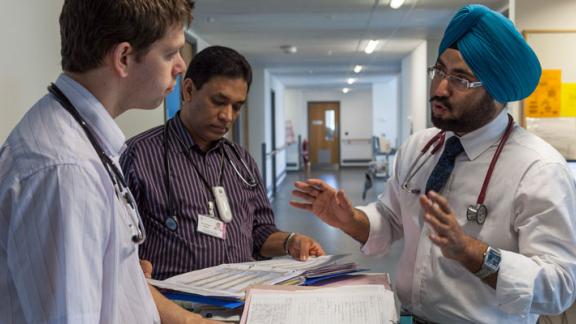The state of medical education and practice in the UK report is launched

Today, (Monday 13 November) the GMC has launched its workforce report, the state of medical education and practice in the UK: workforce 2023.
The GMC’s report says that instead of viewing the changing NHS workforce landscape as a threat to workforce stability, it could in fact help to reduce burnout and dissatisfaction, improve work-life balance, support informed career decisions and increase the likelihood of doctors remaining in UK practice.
The report reveals that doctors who qualified outside the UK made up just under two thirds (63 per cent) of the 23,838 new additions to the register in 2022. International medical graduates (IMGs) made up over half (52 per cent) of new joiners, while doctors who graduated from within the European Economic Area were a smaller component, at 10 per cent.
Even with current and upcoming increases to medical school places, the length of time it takes to train a doctor means the UK must remain an attractive option for doctors who qualify abroad for some time to come, the report states. It also projects that, 14 years from now, 39 per cent of UK doctors are likely to have qualified overseas.
The report also reveals:
- The number of doctors joining the UK medical register is rising. In 2022 there were 296,182 doctors with a licence to practice, an increase of 18 per cent since 2018.
- Since 2019, for every doctor who leaves, on average more than two join the workforce.
- While the number of doctors leaving the profession increased last year, from 9,825 in 2021 to 11,319 in 2022, the proportion of the workforce leaving (4 per cent) is still only returning to pre-pandemic levels. However, the GMC is aware of increasing numbers of doctors taking hard steps towards leaving UK practice
Access the GMC's the state of medical education and practice: workforce report 2023 report.
Charlie Massey, chief executive, GMC said: "Many of these changes will have long-term benefits. We know, for example, that post-foundation training breaks can reduce the risk of burnout and help young doctors build confidence in their next steps. For some, they help provide certainty over their choice of specialty.
"Workforce thinking needs to keep pace with these changes. The ability to provide good patient care, now and for the foreseeable future, depends on the ability to respond quickly to changing career pathways, and to think clearly about making the most of the resources available.
"In the last year, the numbers of specialty and specialist (SAS) and locally employed (LE) doctors, who are not on the traditional training pathway, have also increased dramatically – at four times the rate of the rest of the workforce. Between them, SAS and LE doctors now make up almost a quarter (24 per cent) of licensed UK practitioners."


